Key Takeaways
1. The Clash Between Relativity and Quantum Mechanics Demands a Revolution
As they are currently formulated, general relativity and quantum mechanics cannot both be right.
Incompatible pillars. Modern physics rests on two foundational pillars: Einstein's general relativity (governing the large-scale universe) and quantum mechanics (governing the small-scale). While each theory has been experimentally confirmed with incredible accuracy, they are fundamentally incompatible. This incompatibility arises in extreme situations, such as the center of black holes or the moment of the big bang, where both theories are simultaneously required.
The need for unification. The conflict between general relativity and quantum mechanics suggests that our understanding of the universe is incomplete. A deeper, more fundamental theory is needed to reconcile these two successful yet contradictory frameworks. This quest for a unified theory has driven much of theoretical physics research in recent decades.
String theory as a contender. Superstring theory emerges as a potential resolution to this conflict, offering a new approach to describing matter and forces at the most fundamental level. It proposes that the marriage of the laws of the large and the small is not only happy but inevitable.
2. Relativity Reshapes Space and Time
According to special relativity, no longer can space and time be thought of as universal concepts set in stone, experienced identically by everyone.
Motion is relative. Einstein's special relativity, born from the conflict between Newtonian mechanics and Maxwell's electromagnetism, revolutionized our understanding of space and time. The principle of relativity states that the laws of physics are the same for all observers in constant motion, and that the speed of light is constant for all observers, regardless of their motion.
Space and time are malleable. Special relativity demonstrates that space and time are not absolute and universal, but rather malleable constructs whose form and appearance depend on one's state of motion. This leads to phenomena such as time dilation (time elapses more slowly for moving objects) and length contraction (moving objects appear shorter in the direction of motion).
Gravity as curved spacetime. Einstein's general relativity further revolutionized our understanding of space and time by showing that they can warp and curve in response to the presence of matter or energy. This curvature of spacetime is what we perceive as gravity, replacing Newton's concept of gravity as an instantaneous force acting at a distance.
3. Quantum Mechanics Reveals a Probabilistic Microscopic World
I think I can safely say that nobody understands quantum mechanics.
The quantum realm is bizarre. Quantum mechanics, developed in the early 20th century, describes the behavior of the universe at the atomic and subatomic levels. It reveals a world that is fundamentally different from our everyday experience, characterized by wave-particle duality, superposition, and quantum entanglement.
Probability and uncertainty. Unlike classical physics, quantum mechanics is inherently probabilistic. The uncertainty principle, formulated by Heisenberg, states that there is a fundamental limit to the precision with which certain pairs of physical properties, such as position and momentum, can be known simultaneously. This implies that the universe at its most fundamental level is governed by chance.
Quantum field theory. The framework of quantum field theory combines quantum mechanics with special relativity, describing particles as excitations of underlying quantum fields. This framework has been incredibly successful in explaining the strong, weak, and electromagnetic forces, but it is incompatible with general relativity.
4. String Theory Replaces Point Particles with Vibrating Strings
String theory proclaims, for instance, that the observed particle properties, the data summarized in Tables 1.1 and 1.2, are a reflection of the various ways in which a string can vibrate.
Strings as fundamental constituents. String theory proposes that the elementary particles of the universe are not point-like, but rather tiny, one-dimensional vibrating strings. These strings are incredibly small, on the order of the Planck length (10^-33 cm), making them far beyond the reach of current experimental technology.
Vibrational patterns determine properties. The different vibrational patterns of these strings give rise to the different masses and force charges of the elementary particles. Just as different notes on a violin string correspond to different frequencies of vibration, different particles correspond to different vibrational modes of a fundamental string.
Unification of matter and forces. String theory offers a unified description of all matter and forces, as all are ultimately manifestations of the same fundamental object: the vibrating string. This provides a potential framework for a "theory of everything" that can explain all physical phenomena.
5. Extra Dimensions Are Required by String Theory
String theory, in a real sense, is the story of space and time since Einstein.
Mathematical consistency demands extra dimensions. String theory requires the existence of extra spatial dimensions beyond the three we experience directly. These extra dimensions are not a mere add-on, but a mathematical necessity for the theory to be consistent and avoid various theoretical problems, such as negative probabilities.
Kaluza-Klein theory. The idea of extra dimensions dates back to the work of Kaluza and Klein in the early 20th century, who attempted to unify gravity and electromagnetism by postulating a fourth spatial dimension curled up into a tiny circle. String theory builds upon this idea, requiring six extra spatial dimensions (or seven, in M-theory).
Calabi-Yau manifolds. In string theory, the extra dimensions are thought to be curled up into complex geometrical shapes called Calabi-Yau manifolds. The precise shape of these manifolds determines many of the physical properties of the universe, such as the number of particle families and their masses and force charges.
6. Duality Unifies String Theories and Reveals M-Theory
String theory is a part of twenty-first-century physics that fell by chance into the twentieth century.
Five string theories. In the 1980s, physicists discovered that there were not one, but five consistent versions of superstring theory: Type I, Type IIA, Type IIB, Heterotic O(32), and Heterotic E8 x E8. This multiplicity of theories was an embarrassment, as it suggested that string theory was not as unique and inevitable as hoped.
Duality revolution. In the mid-1990s, physicists discovered that these five string theories are actually related to each other through a web of dualities. Duality is a relationship between two seemingly different theories that describe the same physics.
M-Theory. These dualities suggest that the five string theories are different aspects of a single, more fundamental theory called M-theory. M-theory is not yet fully understood, but it is thought to be an eleven-dimensional theory that contains not only strings but also higher-dimensional objects called branes.
7. Black Holes Offer a Testing Ground for String Theory
Mass grips space by telling it how to curve, space grips mass by telling it how to move.
Black holes as extreme objects. Black holes are regions of spacetime where gravity is so strong that nothing, not even light, can escape. They represent an extreme test of our understanding of gravity and quantum mechanics.
Bekenstein-Hawking entropy. In the 1970s, Bekenstein and Hawking showed that black holes have entropy, a measure of their internal disorder, and that they emit thermal radiation. These results posed a deep puzzle: What are the microscopic constituents of a black hole that give rise to its entropy?
String theory's solution. In 1996, Strominger and Vafa used string theory to calculate the entropy of certain types of black holes, finding perfect agreement with the Bekenstein-Hawking formula. This was a major triumph for string theory, providing strong evidence that it can correctly describe the quantum properties of gravity.
8. String Theory Provides a New Perspective on Cosmology
String theory is definitely revealing the deepest understanding of the universe which we have ever had.
The big bang singularity. The standard model of cosmology describes the universe as expanding from an infinitely dense point in the past, known as the big bang singularity. This singularity is a breakdown of general relativity and signals the need for a quantum theory of gravity.
String cosmology. String theory offers a new perspective on cosmology, suggesting that the universe may have a minimum size and that the big bang singularity is avoided. String theory also provides a framework for understanding the very early universe, when quantum gravity effects were dominant.
Inflation and the multiverse. String theory may also shed light on the inflationary epoch, a period of rapid expansion in the early universe that is thought to have smoothed out the cosmos and seeded the formation of galaxies. Some string theorists have even speculated that inflation may have led to the creation of a multiverse, a vast landscape of different universes with different physical laws.
Last updated:
FAQ
1. What is "The Elegant Universe" by Brian Greene about?
- Unified theory quest: The book explores the search for a single, all-encompassing theory that unites all forces and matter, focusing on the development and promise of string theory.
- String theory explained: Greene introduces the idea that fundamental particles are not point-like but are tiny vibrating strings, whose different vibrational patterns give rise to all known particles and forces.
- Space, time, and dimensions: The narrative delves into how string theory revolutionizes our understanding of space, time, and the possibility of hidden extra dimensions.
- Scientific and philosophical scope: Beyond technical details, the book reflects on the nature of scientific explanation and the human drive to understand the universe at its deepest level.
2. Why should I read "The Elegant Universe" by Brian Greene?
- Accessible to non-experts: Greene presents complex physics concepts—like relativity, quantum mechanics, and string theory—in a clear, engaging way that doesn’t require advanced math or physics knowledge.
- Historical and scientific context: The book traces the evolution of modern physics, showing how conflicts between classical and quantum theories led to revolutionary new ideas.
- Bridges disciplines: It highlights the interplay between physics and mathematics, and how string theory blurs the boundaries between these fields.
- Big questions addressed: Readers are invited to ponder profound questions about the nature of reality, the fabric of space and time, and the possibility of a final theory.
3. What are the key takeaways from "The Elegant Universe" by Brian Greene?
- String theory as unifier: The book positions string theory as the leading candidate for a unified theory of all fundamental forces and matter.
- Revolution in understanding: It emphasizes how modern physics has transformed our concepts of space, time, matter, and the universe’s structure, introducing ideas like hidden dimensions and quantum geometry.
- Ongoing scientific journey: Greene underscores that the quest for the ultimate theory is ongoing, with many theoretical and experimental challenges ahead.
- Appreciation for complexity: Readers are encouraged to appreciate the beauty, complexity, and interconnectedness of the universe as revealed by cutting-edge physics.
4. What is the central conflict between general relativity and quantum mechanics in "The Elegant Universe" by Brian Greene?
- Incompatibility at small scales: The book details how Einstein’s general relativity (describing gravity and large-scale structure) and quantum mechanics (governing the microscopic world) are fundamentally incompatible, especially at the Planck scale.
- Need for unification: Physicists seek a theory that unites gravity with quantum mechanics, avoiding infinite results and inconsistencies.
- String theory’s promise: Superstring theory emerges as a framework that can reconcile these two pillars by replacing point particles with vibrating strings.
- Ultimate theory goal: The search is for an “ultimate” or “final” theory whose range of applicability is unbounded and logically consistent.
5. How does string theory, as described in "The Elegant Universe," modify our understanding of elementary particles and forces?
- Strings replace points: Instead of zero-dimensional point particles, all fundamental entities are one-dimensional strings whose vibrational patterns determine their properties.
- Unified "string stuff": Different vibrational modes correspond to different particles, unifying matter and forces as manifestations of the same underlying string.
- Planck-scale physics: Strings are incredibly small (Planck length) and under immense tension, setting a natural energy scale far beyond current experiments.
- Quantum effects and diversity: Quantum mechanics allows for lighter observed particles, even though most string vibrational modes correspond to very heavy, currently unobservable particles.
6. Why does string theory require extra spatial dimensions according to "The Elegant Universe" by Brian Greene?
- Mathematical consistency: String theory is only consistent if spacetime has ten dimensions (nine spatial, one temporal), with six extra spatial dimensions compactified at tiny scales.
- Kaluza-Klein mechanism: These extra dimensions are curled up in complex shapes (like Calabi-Yau spaces), making them undetectable in everyday life but crucial for the theory’s structure.
- Physical implications: The geometry of these hidden dimensions determines the properties of particles and forces, explaining features that seem arbitrary in other theories.
- Key to unification: Extra dimensions are essential for string theory’s ability to unify all fundamental interactions.
7. What are Calabi-Yau spaces and their role in string theory as explained in "The Elegant Universe"?
- Definition and properties: Calabi-Yau spaces are special six-dimensional shapes that satisfy strict mathematical conditions, suitable for compactifying string theory’s extra dimensions.
- Determining particle physics: The topology and geometry of a Calabi-Yau space influence the possible vibrational modes of strings, thus determining particle types, masses, and families.
- Multiplicity challenge: There are tens of thousands of possible Calabi-Yau shapes, and string theory currently lacks a principle to select the unique one corresponding to our universe.
- Central to predictions: Understanding Calabi-Yau spaces is crucial for making concrete predictions about particle physics from string theory.
8. What is supersymmetry and why is it important in "The Elegant Universe" by Brian Greene?
- Supersymmetry defined: Supersymmetry is a symmetry relating matter particles (fermions) and force carriers (bosons), predicting that every known particle has a superpartner with different spin.
- Role in string theory: Superstring theory incorporates supersymmetry, resolving issues like the tachyon problem and providing the necessary vibrational modes for matter particles.
- Theoretical motivations: Supersymmetry helps solve technical problems in quantum field theory and supports the grand unification of forces.
- Experimental significance: The discovery of superpartner particles would provide strong evidence for string theory and is a key focus of current and future experiments.
9. How does "The Elegant Universe" by Brian Greene explain mirror symmetry and space-tearing transitions?
- Mirror symmetry concept: Mirror symmetry is an equivalence between pairs of distinct Calabi-Yau spaces that yield identical physical theories, allowing complex calculations to be translated between them.
- Mathematical and physical breakthrough: This duality has solved longstanding problems in algebraic geometry and deepened the connection between physics and mathematics.
- Space-tearing transitions: String theory allows for controlled "tearing" and "re-gluing" of space (flop transitions), changing topology without catastrophic consequences, unlike in classical general relativity.
- Protective role of strings: Strings encircling tears in space act as shields, preventing the physical disasters that would occur in point-particle theories.
10. What is M-theory and how does it unify the five string theories according to "The Elegant Universe" by Brian Greene?
- M-theory overview: M-theory is an eleven-dimensional framework that unites the five previously distinct superstring theories into a single, all-encompassing theory.
- Inclusion of branes: It incorporates not only strings but also higher-dimensional objects like membranes (branes), expanding the landscape of possible fundamental entities.
- Role of the eleventh dimension: The extra spatial dimension emerges in strong coupling regimes, revealing new connections and dualities among the string theories.
- Unified perspective: All five string theories are shown to be different aspects or limits of M-theory, fundamentally altering our understanding of the universe’s structure.
11. How does "The Elegant Universe" by Brian Greene address the experimental testability and challenges of string theory?
- High energy requirements: Direct tests of string theory are difficult due to the extremely high energies (Planck scale) needed to probe string-sized phenomena.
- Supersymmetry as a signature: The discovery of superpartner particles would provide strong, though indirect, evidence supporting string theory.
- Indirect tests: Potential experimental signatures include cosmic strings, rare particle decays, black hole entropy calculations, and cosmological observations.
- Ongoing efforts: Greene emphasizes the importance of connecting theory with experiment and the hope that future advances will provide more definitive tests.
12. What are the best quotes from "The Elegant Universe" by Brian Greene and what do they mean?
- On inevitability: "If there is a final theory of nature, one of the most convincing arguments in support of its particular form would be that the theory couldn't be otherwise." This highlights the quest for a unique, logically necessary theory.
- On space-tearing transitions: "The absence of an observable calamitous consequence from such an exotic geometrical evolution is testament to how far beyond Einstein's expectations string theory has gone." This underscores string theory’s radical departure from classical physics.
- On the human quest: Einstein’s reflection, "the years of anxious searching in the dark, with their intense longing, their alternations of confidence and exhaustion, and final emergence into the light," captures the emotional journey of scientific discovery Greene portrays throughout the book.
- On the limits of explanation: Greene contemplates whether some features of the universe might be contingent, raising questions about the ultimate predictability and uniqueness of physical laws.
Review Summary
The Elegant Universe receives mostly positive reviews for its clear explanations of complex physics concepts like string theory, though some readers find the later chapters difficult to follow. Many praise Greene's writing style and use of analogies to make the material accessible. Some criticize the book's focus on speculative theories and lack of experimental evidence. Overall, readers appreciate the book's ambitious attempt to explain cutting-edge physics to a general audience, even if they don't fully grasp all the concepts.
Similar Books


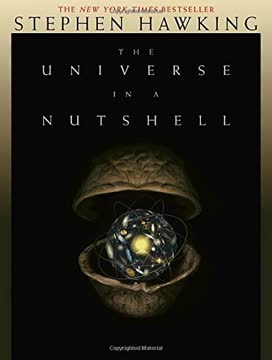
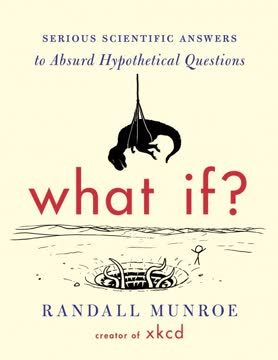


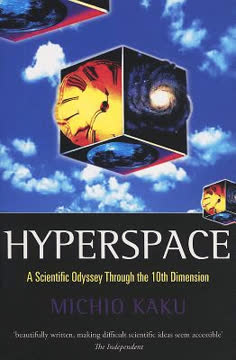
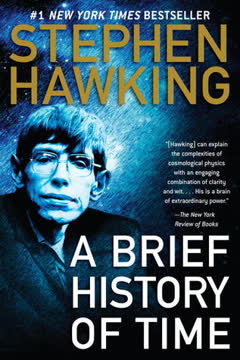
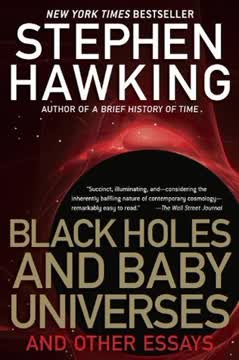

Download PDF
Download EPUB
.epub digital book format is ideal for reading ebooks on phones, tablets, and e-readers.







